


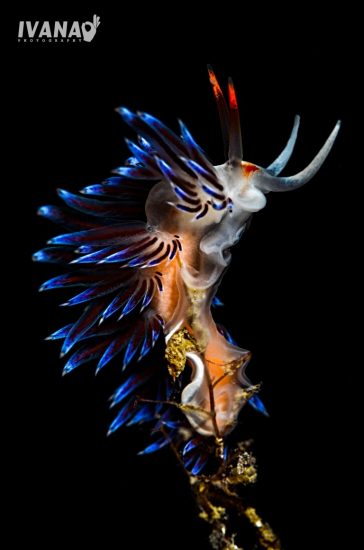

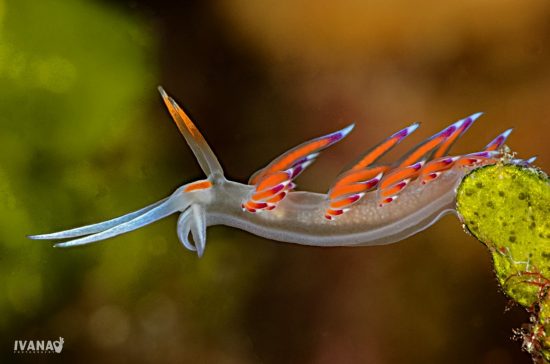
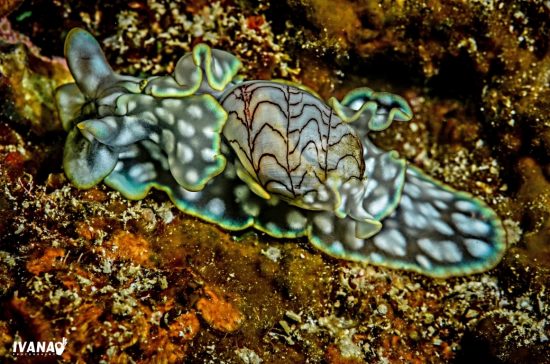
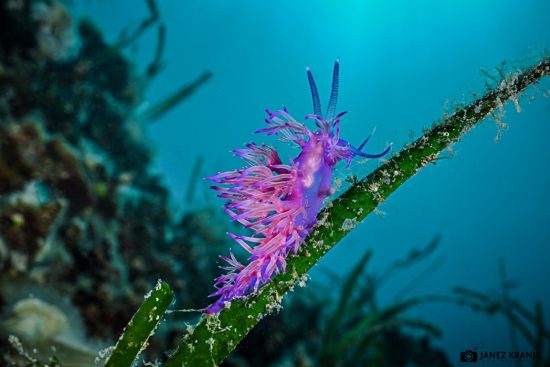


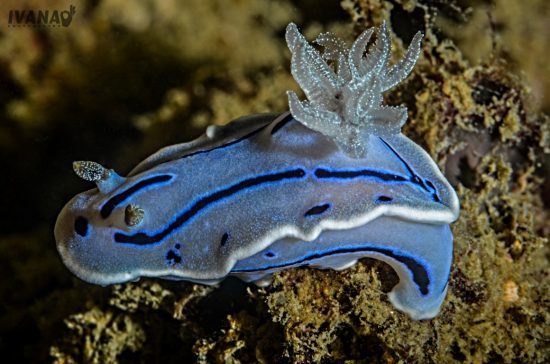

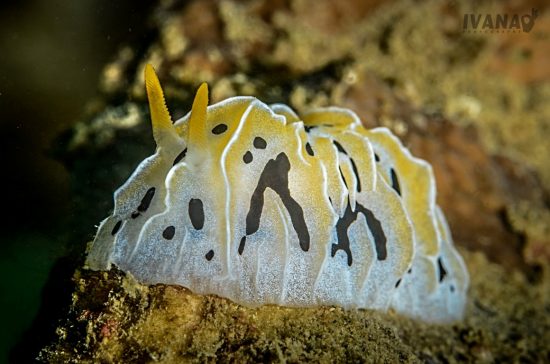
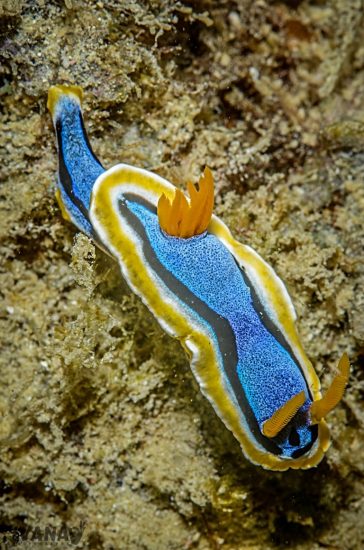
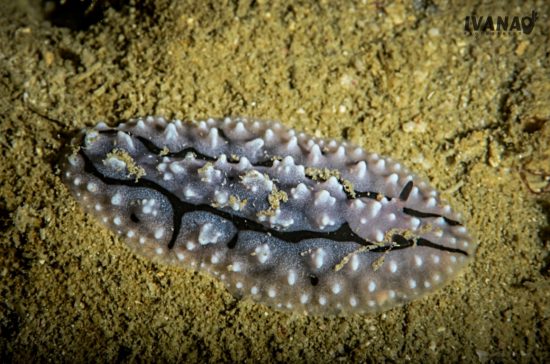
Nudibranchs come in many different colours, shapes and sizes. According to various sources, there are between 2000 - 3000 different species of nudibranchs identified to date, and there are new species being discovered all the time.
Usually small in size and hard to spot, some species such as sea hares, also belonging to the nudibranch family, can grow quite large in size and weigh up to 1.5kg. Even though they are marine gastropod molluscs, they do not have shells like most snails, except in larval stages. They are soft bodied and oblong, which makes them look like slugs with their shell missing. Often confused for sea slugs, they are a group of their own and not very closely related.
Due to their usually small, sometimes microscopic size they are hard to spot. They live in every ocean at varied depths, but are mainly found crawling around the bottom. The name “nudibranch” comes from Latin and Greek meaning naked gills. The protrusions on their body are gills not tentacles, which makes them look even more attractive and sometimes more like a pretty flower rather than an animal.
They are all hermaphrodites and have both female and male organs. Being a single nudibranch is not easy and requires locating a possible mate using what looks like tentacles on top of their heads, “rhinopores”, which are responsible for chemical communication and also used to find food. When in danger they withdraw their rhinopores just like a snail. They do not self-fertilise so they need to find a suitable mate and decide who is male and female, which sometimes leads to fights. When they do succeed and mate, they fertilise each other and produce around 1 million eggs in a form of beautiful looking spirals which are deposited near food so the newly hatched larvae can feed as soon as they hatch.
Some nudibranchs are poisonous and some just pretend to be, but most of them display amazing vivid colours which not only scare off predators, but also make them look very attractive indeed. Some become poisonous by eating and storing stinging cells of other organisms such as sponges and even the nematocysts (stinging cells) of Portuguese Man- O- War. Some produce their own toxins which make them unpalatable for most predators. Their teeth are on a conveyer belt and form of a radula which is more like a cheese grater than a set of teeth. Their pray consists mainly of coral, fish eggs and sponges, anemones and barnacles. Some nations started eating nudibranch but they are not known to be very tasty, having a rather chalky taste. Some species are solar powered and live off the sugars produced by photosynthesizing algae. But what eats them? Turtles, crabs and humans. They don’t survive well in aquariums as they are not very popular and are left where they should be, in their natural environment.
Nudibranchs are not a very active and do pretty much nothing for 3 to 5 hours per day; moving only 10m per day at the most, which might be not a large distance for some, but for the tiny nudibranch this distance is huge. They use their foot to move, which is typical for gastropods, and swim by flexing their muscles. A nudibranch’s lifespan is quite short, ranging from a few weeks to just 1 year. “Professor Grant” Philip Henry Goose discovered in 1884 that two species of nudibranchs make tapping sounds to attract mates or communicate so maybe nudibranchs are not just “pretty”, they may also have their own secret world.
Text:
Bogna Griffin, Marine Biology Student GMIT (Galway Mayo Institute of
Technology), Ireland.
Photos:
Ivana Orlovic Kranjc
Equipment:
Mares Abyss regulator, Mares Flexa wetsuit, Mares X-Stream fins, Mares X-Vision Ultra Liquidskin mask
Nikon D810, Nikon D7000
 Mares
Mares 13th July 2017
13th July 2017 Jaz Beach, Montenegro
Jaz Beach, Montenegro 
